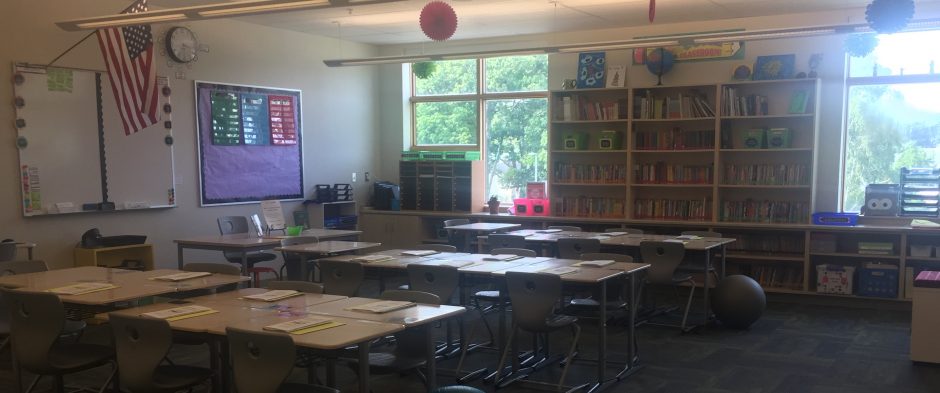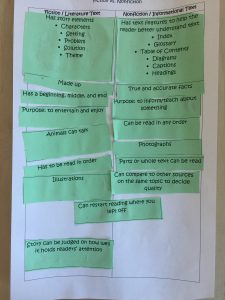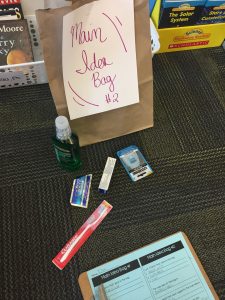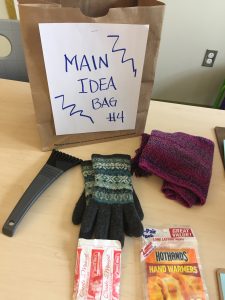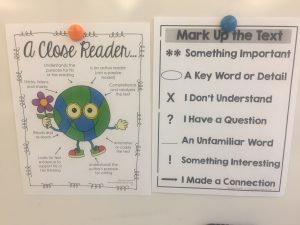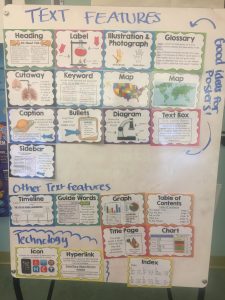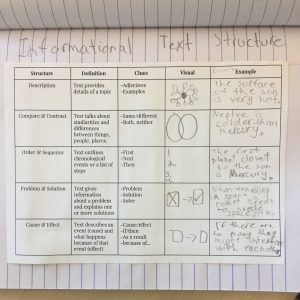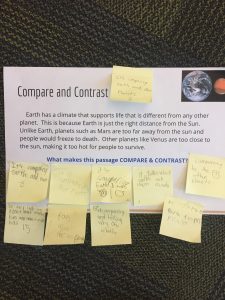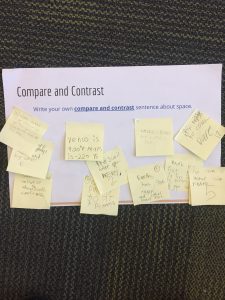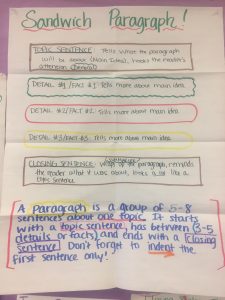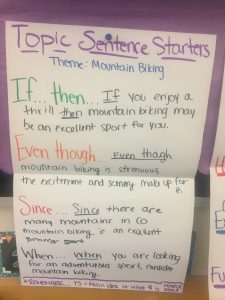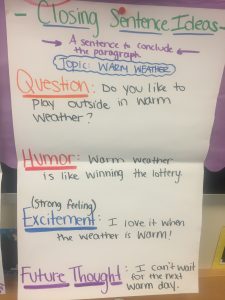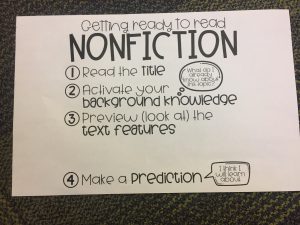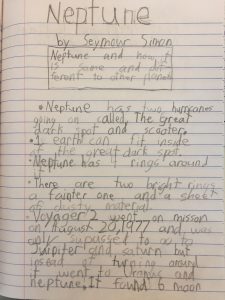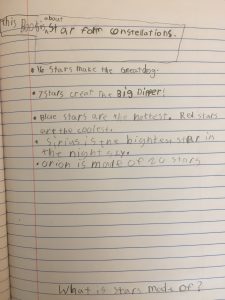In conjunction with out Earth in the Universe unit for science we have been learning how to read and wring informational (nonfiction) texts.
First, we learned about the differences between fiction and informational texts (how they are written, how we read them, features each type of text has) and completed a feature sort.
Then, we started to review how to find the main idea and key details of a text. We learned about this briefly during our mystery unit, but now we are learning how to apply these skills with informational texts.
To practice finding the main idea, students completed a “Main Idea Bag Activity.” They had four different bags which each contained a group of related items. The items were the “key details” and the students had to determine what the “main idea” of the bag was based on the items. Hopefully one or two items really narrowed down the main idea. Can you guess what the main idea was for the bags shown below?
Next, in reading groups, students practiced “close reading” to learn more about Earth. Close reading involves reading a short passage different times, each for a different purpose. We have continued to focus on finding the main idea and supporting details using evidence from the text while also looking for clues from the text to help us with tricky vocabulary words. Close reading also allows the reader to mark up the text to help them “pick it apart” and to look for important ideas. Therefore, we have also been learning how to “mark up a text” using pencils (or sticky notes if we are reading from a book).
To go along with our Earth projects in science (see other post) we have also been exploring the use of text features. Text features can be considered “visuals” or “navigators” to help the reader. For the Earth project posters, students tried to include visual text features. We’ll continue to explore text features as we research and write planet reports.
Students learned about informational text structures to help them identify how the author chose to organize and share their information. The text structures we focused on where description, compare and contrast, order and sequence, problem and solution, and cause and effect. Students read little blurbs and had to identify how they knew the blurb fit the labeled text structure. They then had to write their own sentence using the text structure.
In writing we have been learning about the parts of a paragraph using the Sandwich Paragraph Model. Paragraphs need a topic sentence, three to five detail sentences, and a closing sentences. All sentences should relate to each other and focus on one idea or topic. We learned about several different ways to write a topic or closing sentence. We will be using this learning when we write an informational report about a planet.
Prior to starting the planet research project, students learned about how readers get ready to read nonfiction (informational) texts by 1)reading the title, 2) activating background knowledge, 3)preview the text features, and 4)make a prediction.
Students used the “boxes and bullets” strategy to collect important information from a nonfiction space book. The box represents the main idea of the book, while the bullets provide key details.
